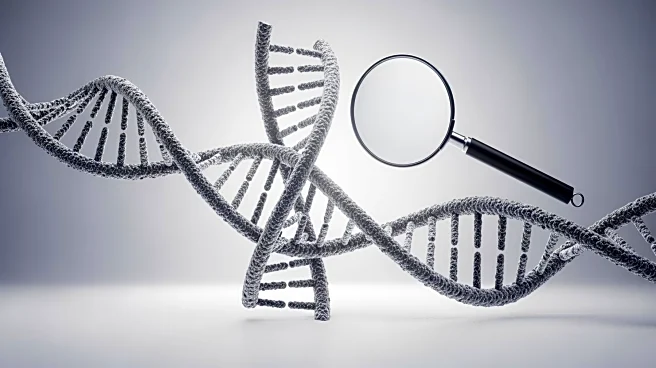What's Happening?
A research team has successfully completed a gap-free telomere-to-telomere genome assembly of the marbled flounder (Pseudopleuronectes yokohamae). The study involved collecting samples from a two-year-old female marbled flounder and utilizing various
sequencing techniques, including short-read sequencing, PacBio HiFi sequencing, Hi-C sequencing, and ONT ultra-long sequencing. The genome assembly process included evaluating genome heterozygosity, removing haplotypic duplication, and aligning Hi-C reads to contigs. The final assembly resulted in a gap-free genome with a length of 582.73 Mb, significantly improving the completeness and continuity compared to previous versions. The study also identified 48 telomeres on both ends of 24 chromosomes, enhancing the understanding of the genetic makeup of the marbled flounder.
Why It's Important?
The completion of a gap-free genome assembly for the marbled flounder is a significant advancement in marine biology and genetics. This achievement provides a comprehensive genetic blueprint that can aid in the study of the species' adaptability, nutritional value, and economic importance in aquaculture. The marbled flounder is known for its tolerance to low temperatures and strong adaptability, making it a valuable species in regions like South Korea, Japan, and northern China. The detailed genetic information can facilitate breeding programs, conservation efforts, and further research into the species' resilience to environmental changes and pollution.
What's Next?
The gap-free genome assembly opens up new avenues for research into the marbled flounder and related species. Scientists can now explore gene functions, evolutionary biology, and the impact of environmental factors on genetic expression. The data can be used to improve aquaculture practices, enhance the species' resistance to diseases, and optimize growth conditions. Additionally, the genome assembly can serve as a reference for comparative studies with other fish species, potentially leading to discoveries that benefit the broader field of marine biology.
Beyond the Headlines
The successful genome assembly of the marbled flounder highlights the importance of advanced sequencing technologies in modern genetics. It underscores the potential for these technologies to revolutionize the study of marine species, offering insights into genetic diversity, adaptation mechanisms, and evolutionary history. The research also emphasizes the need for continued investment in genomic studies to address challenges in biodiversity conservation and sustainable aquaculture.















